Heat detectors are a boon to alert individuals on the premises and help prevent mishaps. So, here we will discuss the uses and advantages of heat detectors and how you can choose the best for your place. It won’t be difficult to make your life easier if you have the answers to all your questions.
What Is It?
Quick Navigation
Heat detectors give alert alarms when the room temperature or area increases. Thermal energy is available in all heat detectors, and it also lags.
There are two types of heat detectors: rate of rising and fixed temperature. It gives an alert warning when the temperature becomes high. It has electro-pneumatic technologies in it.
Advantages
- Heat detectors are more beneficial than other devices as it acts as a protection layer.
- It is purely a fire detection device.
- It also works as a sprinkler in another way.
- The fire detection device has the ability of a heat detector.
- It makes cleans the dusty environment.
Disadvantage
- The only cons in these heat detectors are too low in dumping heavy fire as it shortens it down.
What Are Different Types
There are only two types of heat detectors, namely Thermocouple and Electro-pneumatic. The uses of these types have the ability to detect the temperature, and it is battery oriented wired to typed technologies.
Two types are fixed temperature and rate of rising.
1. Fixed Temperature
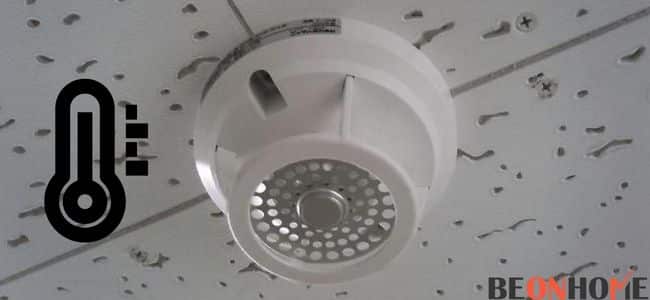
The commonly used type of heat sensor is found in homes and businesses with a fixed temperature.
When heat-sensitive eutectic alloys liquefy to the heat in the surrounding area, these are simple but effective devices to sound an alarm.
You can adjust the heat detection alarm as per your wish. It is suitable for your environment as it has a thermal lag feature.
2. Rate Of Rising
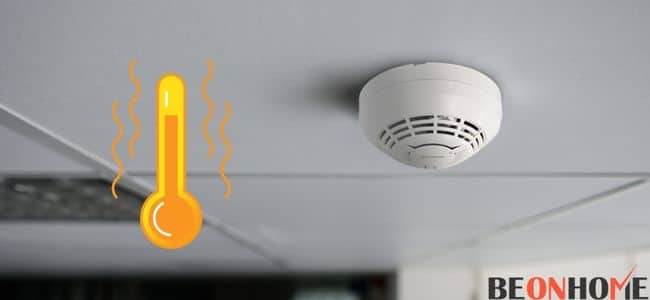
The rate of rising is commonly known as ROR detectors. It gives a signal as a way of alarm when the temperature increases from 12 to 15 degrees Fahrenheit.
It is also operated at a low-temperature threshold. This device uses heat thermocouples and measures the temperature with accuracy. By adjusting, you can reduce the settings of false alarm.
How can a smoke detector be distinguished from a heat detector?
When the temperature around the smoke detector reaches the limit, it alerts. The heat detector alerts the user about the possibility of a fire.
However, smoke cannot be detected by heat detectors. A smoke detector detects fire when it detects combustion.
Fires are classified into two types: Low-energy fires and high-heat fires
1.Low-energy fires
A low-energy fire smolders, slowly consuming fuel and emitting a lot of smoke. This type of fire, however, produces only a small amount of heat. Because this fire produces more smoke than heat.
Thermal detection may be inadequate and take too long to detect. The fire will have caused significant damage to the home by the time the heat sensor is activated.
2. High-Temperature Fire
A high-heat fire is the second type of fire. A high-heat fire quickly consumes fuel. The flames grow high and high as the fire grows.
An explosion and combustion can start these fires. These fires are fuelled by easily combustible materials such as paper, hay, or dry wood.
This fire will quickly set off a heat detector. Heat Detectors are best suited for detecting this type of fire.
Heat detectors specifications
A heat detector is a type of fire alarm that is activated. It activates when the convective thermal energy of a fire rises.
The temperature of an element of heat also rises. The rate of heat flow into the element is governed by the element’s thermal mass and conductivity. When the temperature rises, it gets triggered.
What To Look at While Choosing?
1. Sensor
The sensor of the heat detector has a diaphragm that has the ability to move when the temperature changes. When it changes, the circuit activates automatically. To detect the fire alarm, you can use infrared cameras.
2. Ease Of Installation
Heat detectors are installed in areas that are easy to catch fire. Connectivity with other detectors Heat detectors has connectivity with other detectors. It tracks the temperature, but the result comes as combustion.
3. Longevity
According to the technical study, a heat detector has a warranty of around 10 years. But the warranty is only for 1 year with replacement offers.
4. Cost
The cost of a heat detector is Rs. 2,804.00 in Indian rupees and foreign currency $36.79.
How To Find The Best Product?
A heat sensor alarm can be electronic or mechanical, depending on its design. A thermistor is an electronic heat detector alarm that changes the detector resistance as the temperature rises.
The strong connectivity can choose the best heat detectors. Its connection should be limitless as it can be connected to numerous devices. It must have good performance comparatively.
1) Fire angel smart RF wireless alarm

- This alarm can be connected to up to 50 wireless devices.
- This alarm is a modernized system and is best suitable for today’s world.
- It costs around £35.
2) HiSPEC radio interlink alarm system
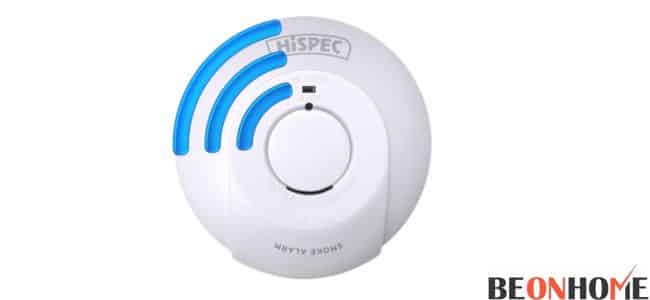
- It is a heat alarm kit and has a warranty of 1 year.
- It includes carbon monoxide
- Its cost starts from £32 to £133.32.
3) Acio
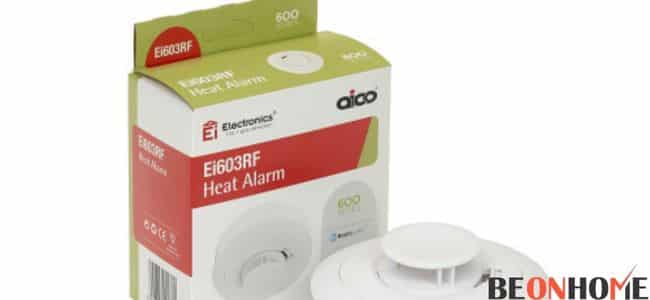
- It has high performance compared with others.
- It is a fast thermistor heat detector and has an easy configuration to set up.
- It has a warranty of around 10 years.
- It costs from £39 to £133.78.
Where To Place Heat Detectors?
The heat detectors must be placed in the center of the ceiling to protect the area from dust and dirt.
There are usually found in the places of fire catchers like the kitchen where you keep your gas and stove. Sometimes it happens because of electrical appliances like damaged wires and half current.
Anything can happen at any time and anywhere around you. So it better has fixed the detector’s heat at the hall’s center. The best places for installing the ng heat detectors are high in gases, fumes, and chemicals.
Locations
- Kitchen – The heat detector must be placed above 6-7feet on the ceiling as the heat rises it is the best place.
- Garage – Excess fumes through the exhaust pipe when a car is parked in a garage. Here heat detector helps you a lot.
- Air duct- when the heat detector is installed across the air duct it takes away the heat through the sensor.
How To Install Heat Detectors?
Heat detectors are usually installed to save your property from fire. Heat detectors are set up in the area of dust and smoky areas. Standalone heat detectors cause less effect in the presence of fire.
They are installed in many places in your home. Mostly in the kitchen and bathroom. The heat detectors are the best material to earn you when any kind of dangerous incident occurs.
The steps to be followed are
Step 1: The first step to installing a heat detector is to find a place at the top. It is because the top portion is best suitable for heat detectors.
Step 2: The second step is to place the detector 300 mm away from the wall. These are located in highly risked rooms.
Step 3: The third step is to just set the thing given in the pack. With the help of the catalog, which is simple. It is just fixing.
FAQ
How Does a Heat Detector Work with a Fire Alarm?
A heat detector is a fire alarm that responds when the convective thermal energy of a fire raises the temperature of a heat-sensitive element. The thermal mass and conductivity of the element govern the rate of heat flow into it. This thermal lag is present in all heat detectors.
What is the best Heat detector locations?
Install heat alarms on the ceiling, preferably in the center of the room/space, such as the kitchen, garage, or loft. Install enough alarms to account for closed doors and obstacles.
Should you use a smoke detector too?
You should install a smoke alarm if your home does not have a smoke alarm. More protection is provided by installing additional smoke alarms throughout the home. There are two main types of smoke alarms, distinguished by the smoke detection sensor used in the alarm, ionization or photoelectric.
Final Talk
To sum up, this article so far stated here is very helpful when your thinking about it to buy. It gives you caution and attention when you are lacking at that time. It makes you feel secure and safer when you have children at home.


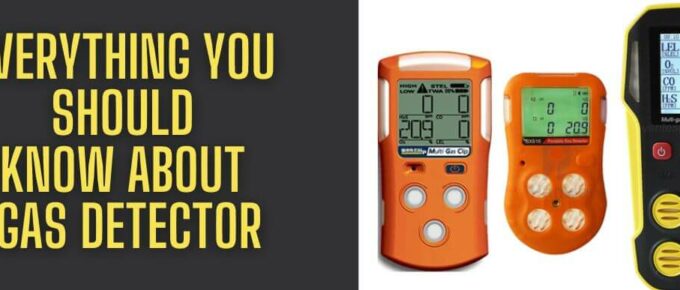
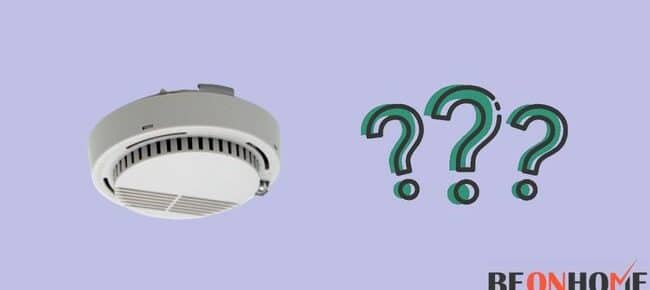
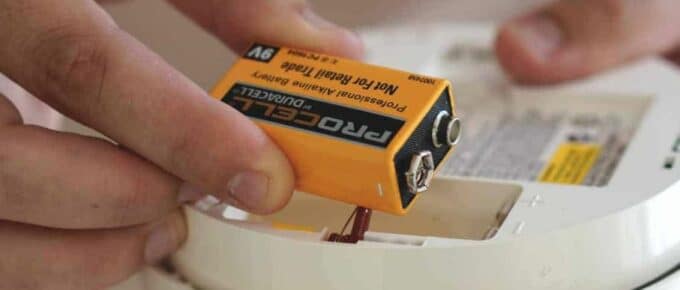
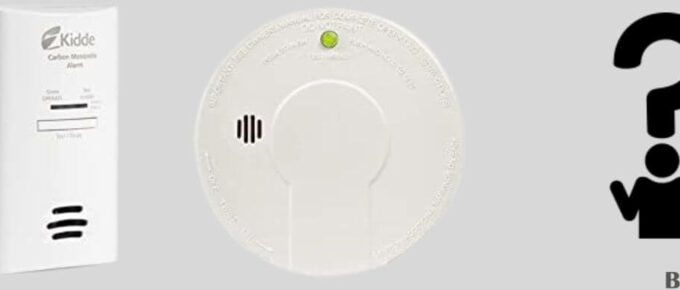
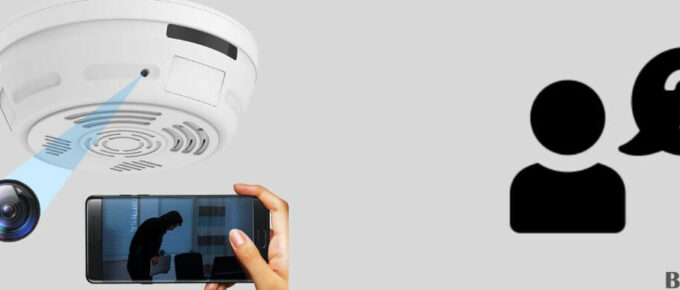
Leave a Reply